Table of Contents
The Malaysian flag, also known as the flag of Malaysia, holds a significant place in the nation’s history and culture. With its vibrant colors and meaningful symbolism, it represents the Malaysian identity and heritage. In this article, we will delve into the intriguing aspects of the Malaysian flag, its design, historical background, and the symbolism behind its elements.
The Malaysian flag features 14 alternating red and white horizontal stripes, with a blue rectangle in the upper hoist-side corner bearing a yellow crescent and a 14-pointed star. The red and white stripes represent the equal status of the states, the blue stands for unity among the nation’s people, the yellow crescent represents Islam, and the 14-pointed star, the Bintang Persekutuan, symbolizes the unity among the country’s states and federal territories.
Malaysia Flag: Colors and Symbolism
- The flag of Malaysia has 14 alternating red and white horizontal stripes with a blue rectangle in the upper hoist-side corner bearing a yellow crescent and a 14-pointed star.
- The red and white stripes represent the equal status and harmony of the states within the federation.
- The blue color signifies unity among the nation’s people.
- The yellow crescent stands for Islam, the country’s official religion.
- The 14-pointed star symbolizes the unity of the country’s states and federal territories.
- The flag’s design reflects the nation’s aspirations, cultural heritage, and unity among the Malaysian people.
Flag of Malaysia

The flag stands as a powerful symbol that encapsulates the cultural significance and spirit of the nation. Its design consists of 14 alternating red and white horizontal stripes and a blue rectangle bearing a yellow crescent and a 14-pointed star. The red and white stripes show the harmony of the states within the federation, while the blue stands for unity. The yellow crescent represents Islam, and the 14-pointed star signifies the unity of the country’s states and territories.
The history of the flag is intertwined with Malaysia’s rich heritage and path to nationhood. Adopted on September 16, 1963, when Malaysia was formed, the flag represents the unity and aspirations of the Malaysian people.
Beyond its aesthetics, the flag from Malaysia carries deep symbolic meanings. The colors and symbols reflect the values and aspirations of the Malaysian people, showcasing unity, harmony, and the significance of Islam. The Bintang Persekutuan stands as a representation of the unity and cooperative spirit among the various states and territories. It embodies Malaysia’s cultural heritage and serves as a reminder of the nation’s resilience and unity.
National Flag Etiquette and Protocol
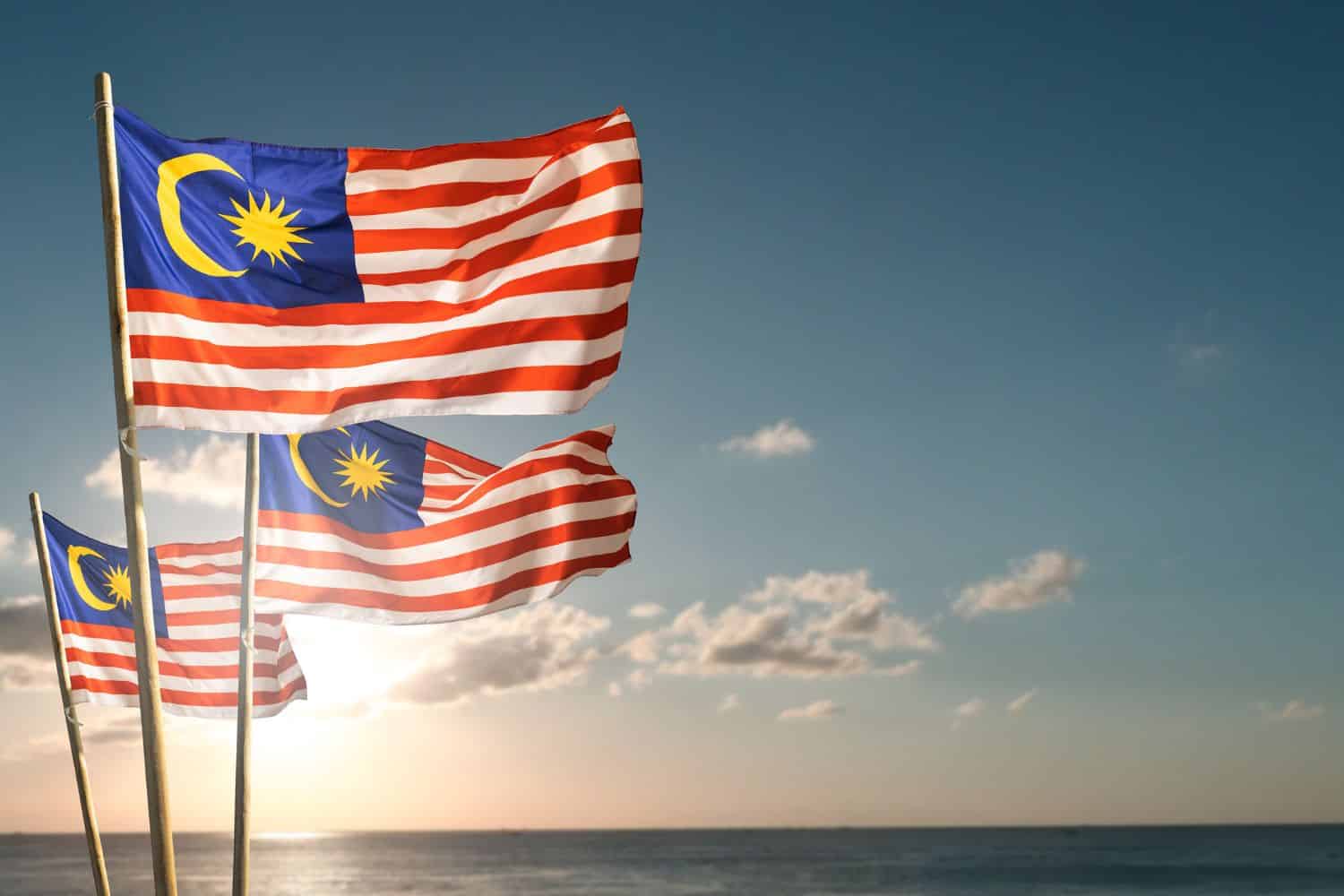
Respecting the proper usage and display of the Malaysian flag is of utmost importance. Understanding flag etiquette is essential, especially during national events and ceremonies. Learn about the protocols governing the handling, hoisting, and lowering of the flag. Discover the appropriate procedures for retiring or handling damaged flags, ensuring they are accorded the respect they deserve.
- Proper Handling: The Malaysian flag should be handled with care and respect, ensuring it is not allowed to touch the ground or floor. It should be held upright and not dragged.
- Hoisting and Lowering: When hoisting the flag, it should be raised briskly and lowered ceremoniously. It is customary to hoist the flag at sunrise and lower it at sunset, although this may vary depending on the occasion or specific guidelines.
- Displaying the Flag: The Malaysian flag should be displayed with the blue field on top and the yellow crescent and star-centered. It should be flown freely and not entangled or obstructed.
- Half-Staff: Lowering the flag to half-staff is a gesture of mourning or respect. This should be done on specific days of remembrance or when directed by authorities to honor national tragedies or the passing of significant figures.
- Flag Retirement: When a Malaysian flag becomes damaged, torn, or worn out, it should be retired in a dignified manner. This can involve burning it in a respectful and solemn ceremony, following appropriate guidelines and local regulations.
- Flag Size and Placement: The size of the Malaysian flag displayed should be proportionate to the size of the flagpole or display area. It is recommended to consult local guidelines or authorities for specific rules regarding flag size and placement.
- Respectful Disposal: If a flag cannot be retired through burning, it should be disposed of in a respectful manner. This can involve burying it or handing it over to authorized organizations that specialize in flag disposal.
Interesting Facts and Trivia
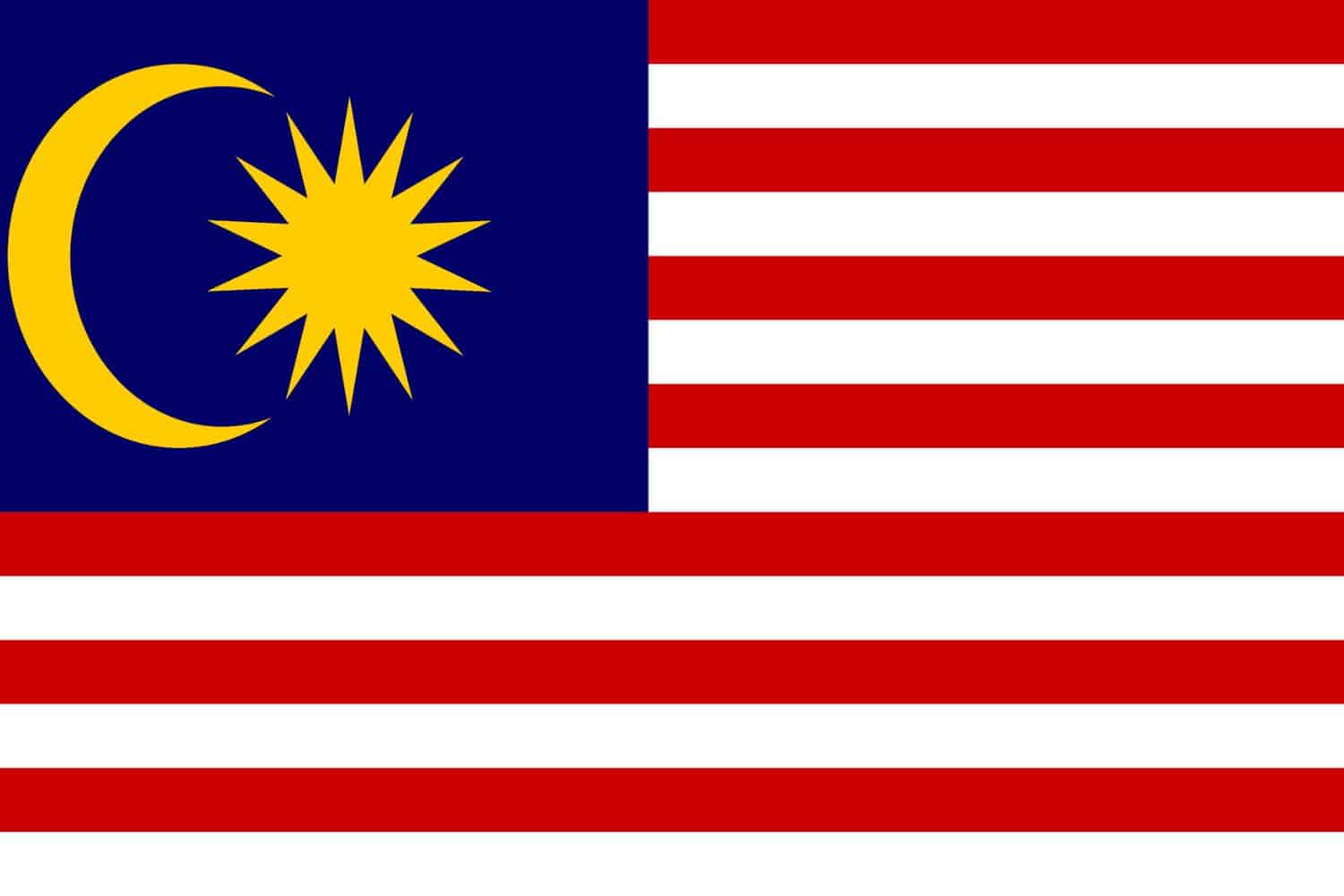
Embark on a journey of fascinating facts and lesser-known trivia about the Malaysian flag. Discover unique features within the flag’s design that hold hidden symbolism. Uncover stories of famous incidents or events involving the flag that have left an indelible mark on the nation’s history and identity.
Rich Tapestry of History
- 1957: The current flag of Malaysia, known as the “Jalur Gemilang” (Stripes of Glory), was adopted on September 16, symbolizing the unity and aspirations of the Malaysian people.
- Colors and Symbolism: The red and white stripes represent the 13 states of Malaysia and the unity among them, while the blue rectangle symbolizes unity among the country’s people. The yellow crescent represents Islam, the country’s official religion, and the yellow 14-pointed star, the “Bintang Persekutuan” (Federal Star), signifies the unity among the country’s 13 states and its federal territories.
- National Identity: The flag embodies Malaysia’s rich history, cultural heritage, and the nation’s ongoing pursuit of unity, prosperity, and renewal.
These historical facts highlight significant moments in the history of the Malaysian flag, showcasing its role in shaping Malaysia’s national identity and symbolizing its struggles and aspirations throughout the years.
Flag-Related Symbols and Emblems
A flag is not alone in representing the nation’s identity. Explore additional national symbols and emblems closely associated with Malaysia, understanding their significance and how they relate to the flag. Delve into their historical and cultural roots, further enriching your understanding of Malaysia’s heritage. It’s easy to travel and make a Malaysia tour to visit the country’s best destinations.
Symbolisms of the Malaysian Flag
The flag of Malaysia holds several symbolic elements that represent the nation’s history, values, and aspirations. Here are the symbolisms of the Malaysian flag presented in itemized form:
- Red Color: Represents bravery, valor, and the sacrifices made by the Malaysian people throughout history.
- Blue Color: Symbolizes unity and harmony among the nation’s diverse population.
- Yellow Crescent: Represents Islam, the official religion, and signifies purity and righteousness.
- Fourteen-pointed Star (the Star of Federation): Symbolizes the unity among Malaysia’s states and federal territories.
- Stripes: The 14 alternating red and white stripes represent the 13 states and the federal territories of Malaysia.
- Flag’s Design: Reflects Malaysia’s aspirations, cultural heritage, and unity among the Malaysian people.
- National Identity: The flag serves as a powerful symbol that unifies the Malaysian people, reminding them of their shared heritage and cultural identity.
- National Aspirations: Through its design and elements, the flag embodies the aspirations and values of the Malaysian nation, including bravery, unity, and harmony.
These symbolisms in the flag contribute to the country’s sense of identity and pride, reflecting its historical journey and cultural significance.
Flags of Similar Countries or Regions
Examining the flags of neighboring countries or regions can provide intriguing insights. Compare and contrast the flags, exploring similarities in design, colors, or symbolism. Uncover historical and cultural connections between flags, shedding light on shared influences or distinctive identities.
Malaysian Flag vs Indonesian Flag
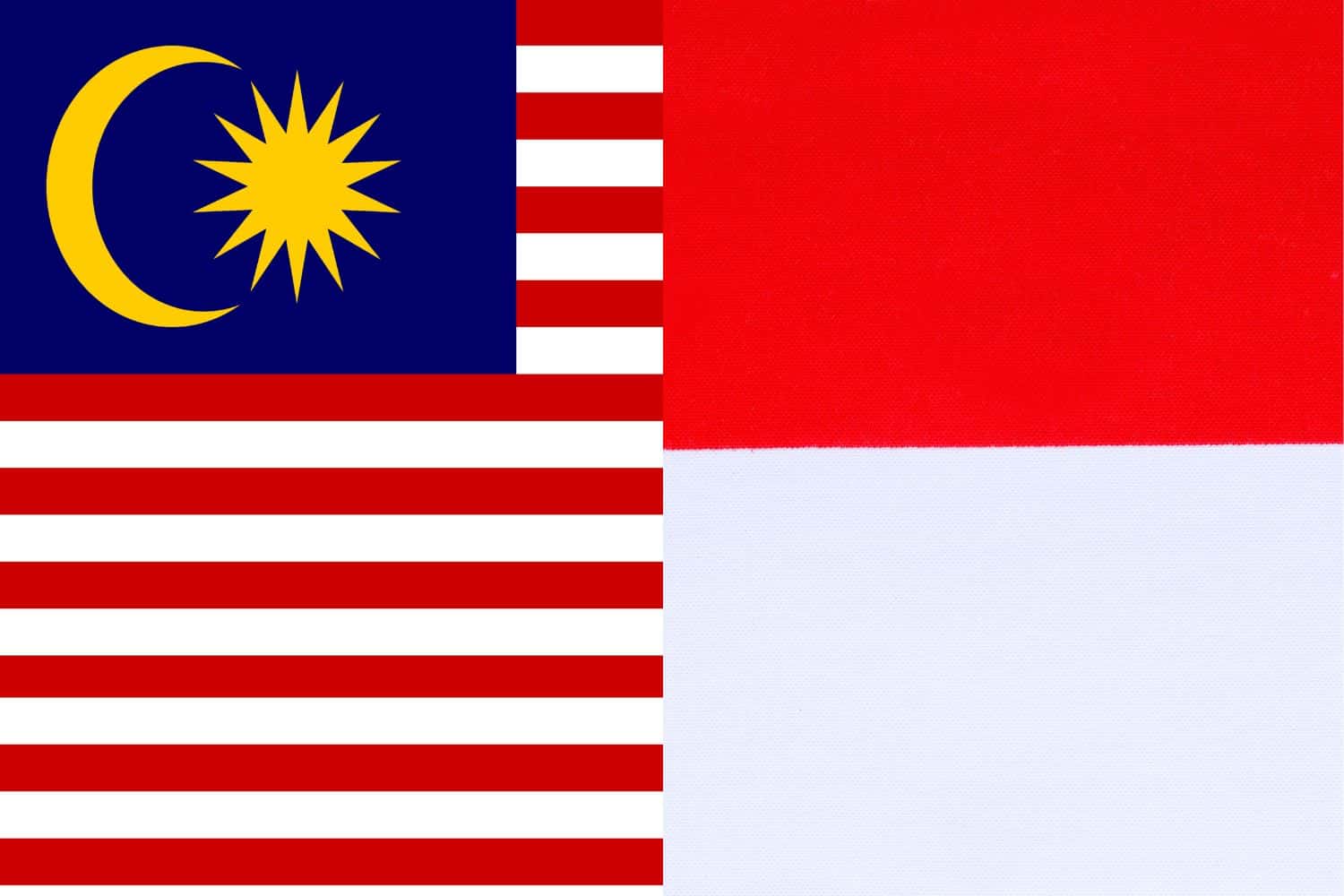
Similarity: Both flags feature red and white horizontal stripes.
Difference: The Malaysian flag includes a blue rectangle on the hoist side containing a yellow crescent and a 14-pointed star, while the Indonesian flag consists only of two horizontal stripes, red on top and white below.
Malaysian Flag vs Bruneian Flag
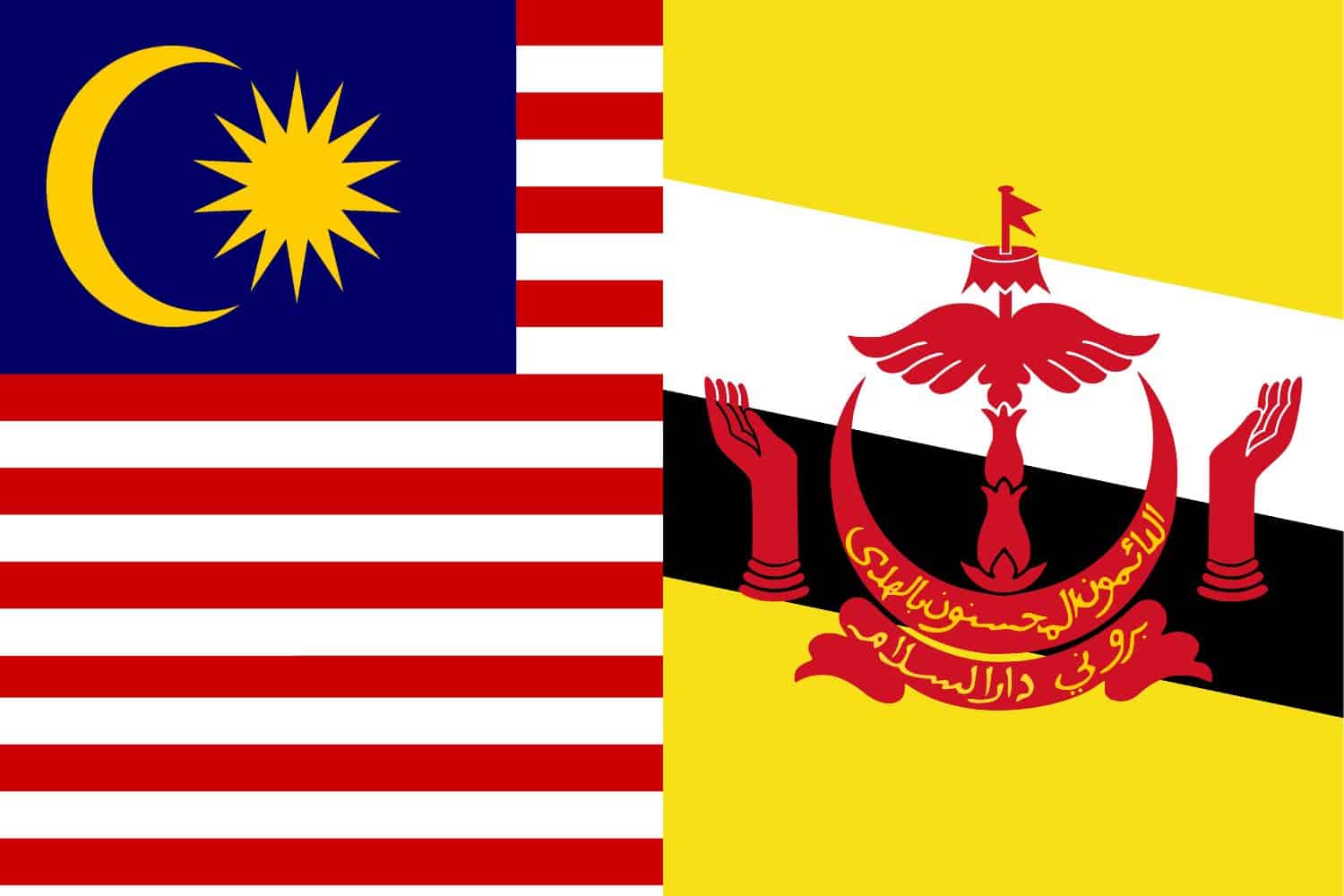
Similarity: Both flags feature red and yellow.
Difference: The Bruneian flag includes a white diagonal stripe on the top left and a black diagonal stripe on the bottom right, both overlaid with the national emblem. The Malaysian flag has red and white horizontal stripes with a blue rectangle containing a yellow crescent and star on the hoist side.
Malaysian Flag vs Singaporean Flag
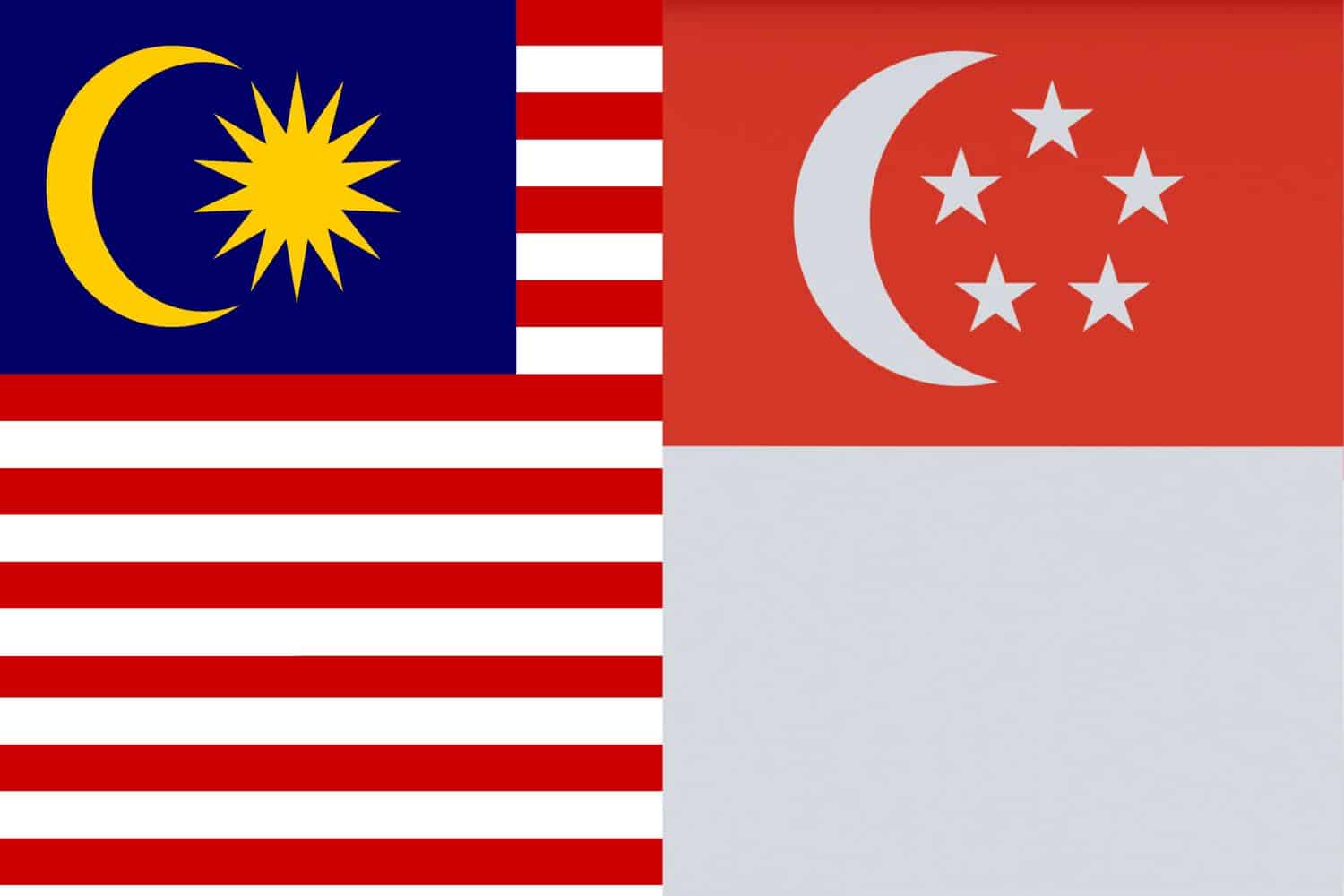
Similarity: Both flags have red and white as prominent colors.
Difference: The Singaporean flag consists of a red field on top and a white field below with a crescent moon and five stars on the hoist side in the red field. The Malaysian flag has alternating red and white horizontal stripes with a blue rectangle containing a yellow crescent and star on the hoist side.
Malaysian Flag vs Thai Flag
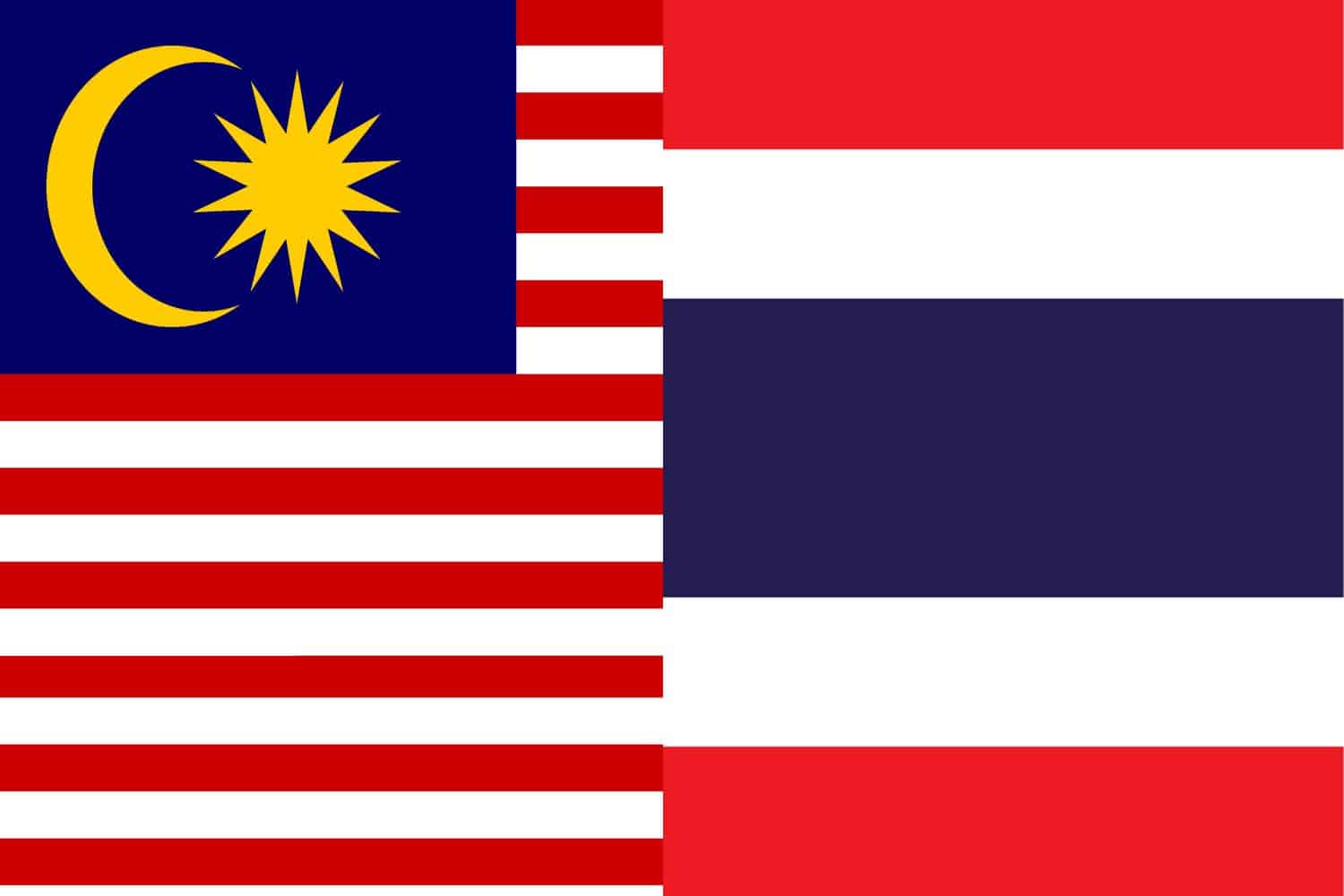
Similarity: Both flags feature red, white, and blue stripes.
Difference: The Thai flag consists of alternating horizontal stripes of red, white, blue, white, and red. The central blue stripe is wider. The Malaysian flag has alternating red and white stripes with a blue rectangle containing a yellow crescent and star on the hoist side.
Malaysian Flag vs Philippine Flag
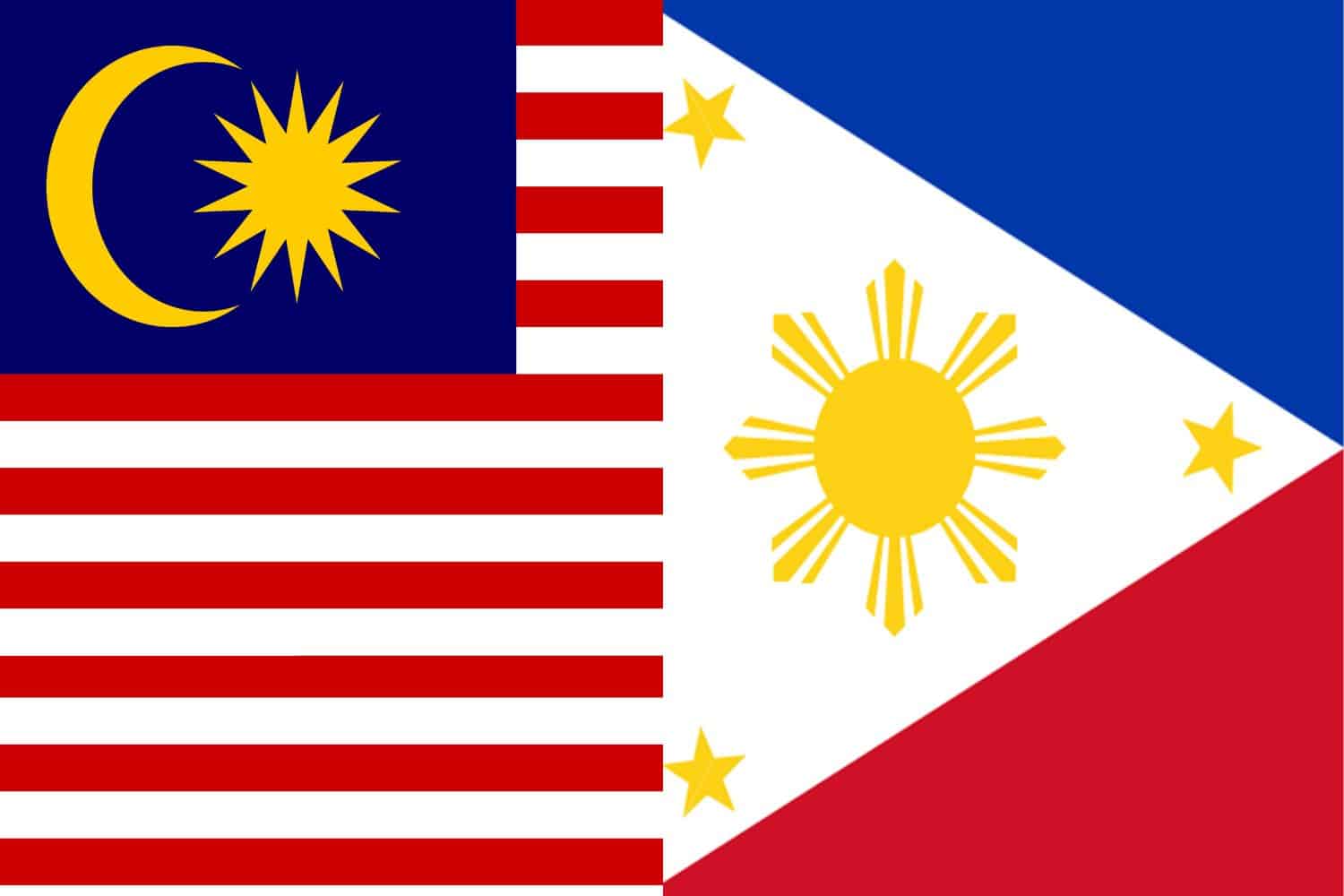
Similarity: Both flags include red, white, and blue colors.
Difference: The Philippine flag features a blue field on the top, red on the bottom, with a white triangle on the hoist side containing a sun and stars. The Malaysian flag has alternating red and white horizontal stripes with a blue rectangle containing a yellow crescent and star on the hoist side.
Frequently Asked Questions (FAQs)
Discover answers to common questions related to the Malaysia flag picture. From its historical origins to the symbolism behind its elements, find concise and informative responses that address inquiries commonly posed by those curious about Malaysia’s flag.
What does the Malaysian flag represent?
The Malaysian flag, also known as the “Jalur Gemilang” (Stripes of Glory), represents the country’s unity among its diverse states and territories.
Why does the Malaysian flag have 14 stripes?
The 14 alternating red and white stripes represent the country’s 13 states and the federal territories of Kuala Lumpur and Putrajaya.
What is the significance of the blue rectangle on the Malaysian flag?
The blue rectangle stands for unity among the country’s diverse population.
What do the crescent and the 14-pointed star on the flag signify?
The crescent represents Islam, the official religion of Malaysia, while the 14-pointed star, or “Bintang Persekutuan” (Federal Star), represents the unity among the country’s states and territories.
Why does the Malaysian flag resemble the American flag?
While the Malaysian flag might superficially resemble the U.S. flag due to its stripes, its symbolism and history are distinct. The resemblance is coincidental, and the flag’s design draws more from traditional Islamic symbols and the nation’s own history.
When was the Malaysian flag adopted?
The flag was first raised on 16th September 1963, the day Malaysia was formed.
Who designed the Malaysian flag?
The design was selected through a public competition in 1947. The winner, Mohamed Hamzah, was a 29-year-old architect from Johor.
Have there been any changes to the flag since its initial adoption?
Yes, initially, the flag had 11 stripes and an 11-pointed star representing the then 11 states of Malaya. The design was modified in 1963 to include three more stripes and points on the star to account for the joining of Sabah, Sarawak, and Singapore. After Singapore’s departure, the design remained the same, symbolizing the new territories.
Is there a proper protocol for displaying the Malaysian flag?
Yes, like many countries, Malaysia has specific flag protocols. For instance, the flag must not be flown in a faded or frayed condition, and when flown alongside other national flags, the Malaysian flag must be flown at the same height.
What do the colors on the flag mean?
The red stripes symbolize courage and sacrifice, while the white stripes represent purity and honesty. The blue field represents unity and harmony, and the yellow of the star and crescent is the royal color of the Malay rulers.
More About Malaysia
[the-post-grid id=”50394″ title=”Malaysia Main page”]
